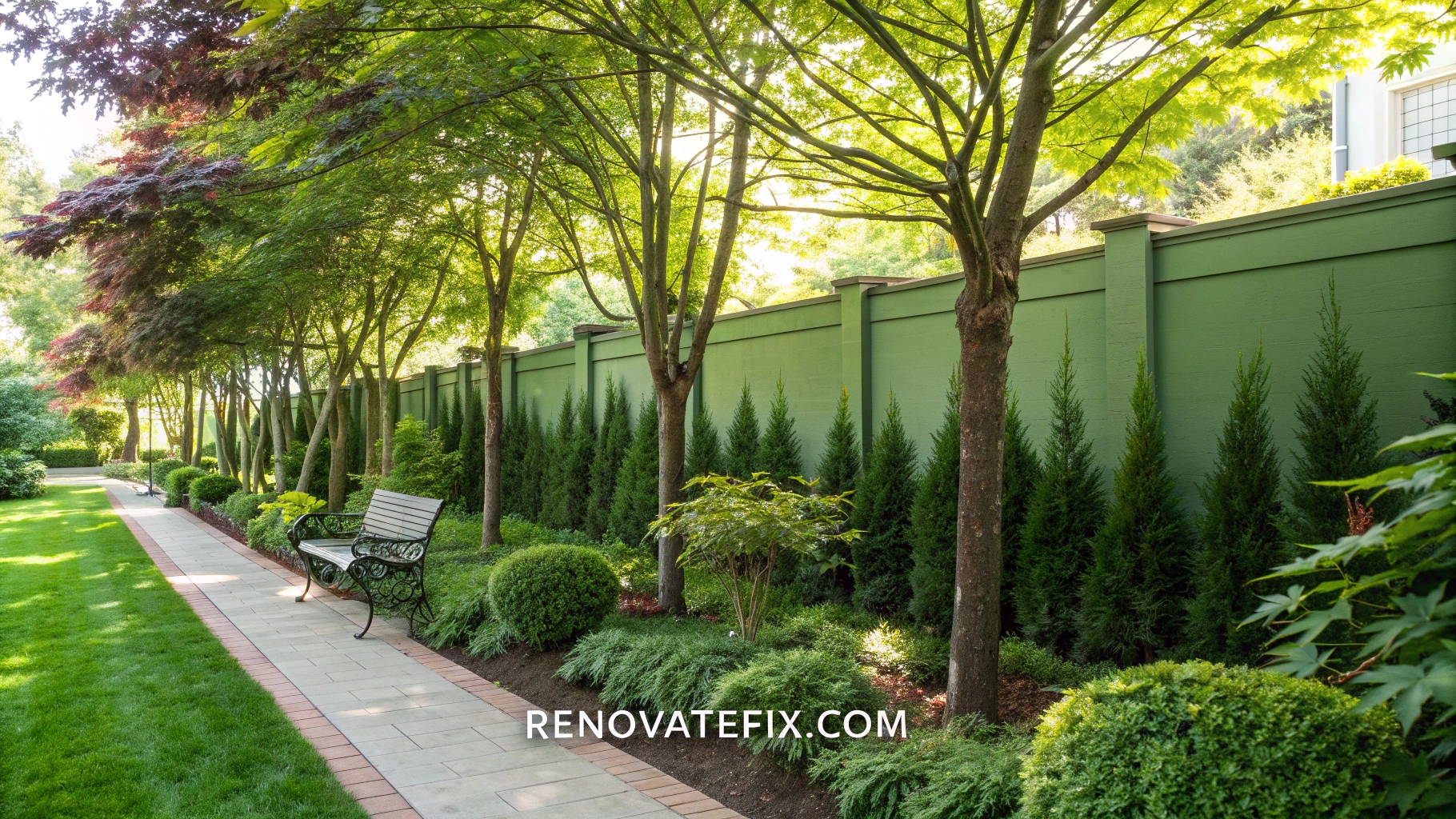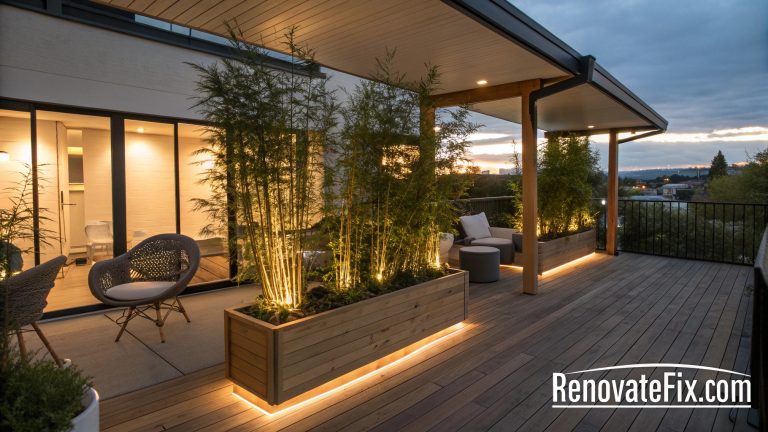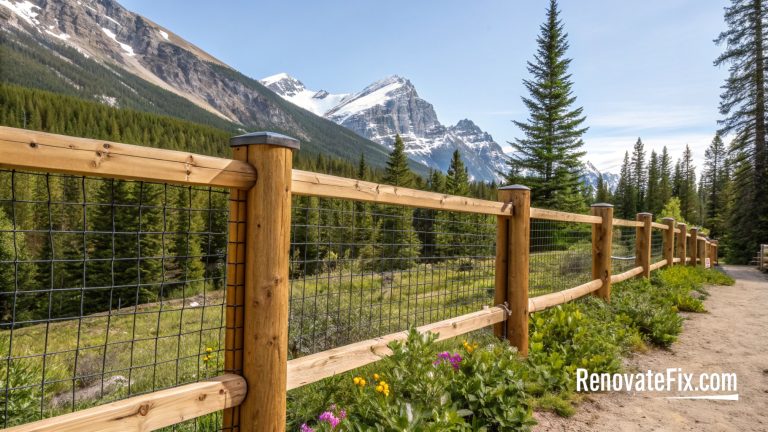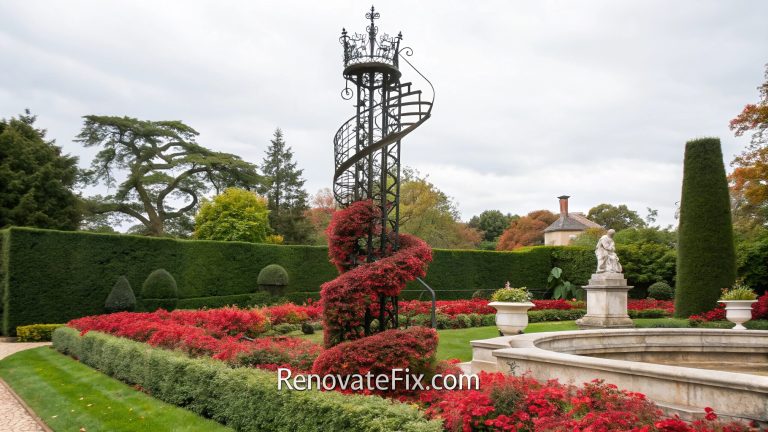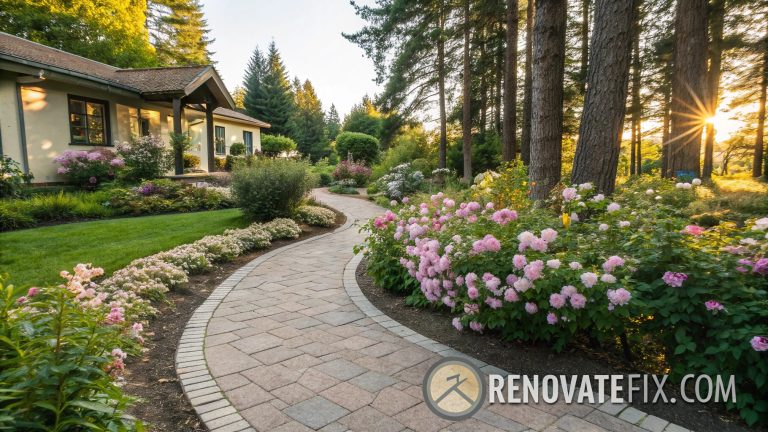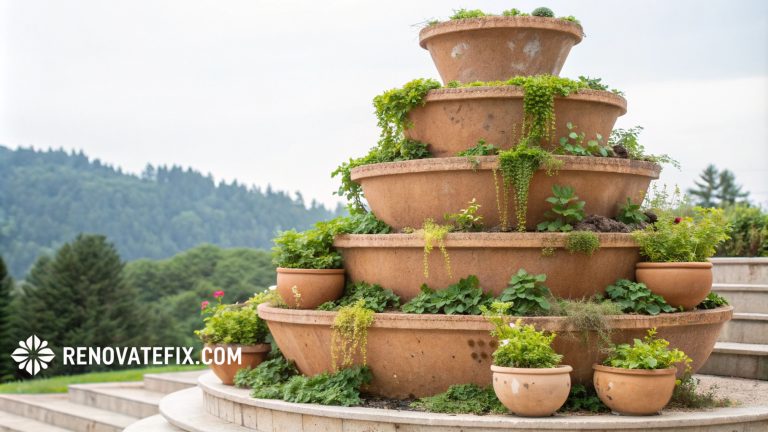15 Stunning Japanese Maple Tree Landscape Ideas That Will Elevate Your Outdoor Space
Maple trees from Asia possess an unmatched elegance with their delicate leaves, stunning seasonal color shifts, and graceful branching patterns.
These botanical treasures serve as focal points in any garden setting, offering year-round visual interest through their distinctive silhouettes and remarkable foliage displays.
Whether you own a compact urban courtyard or sprawling rural property, these versatile trees adapt beautifully to various landscape styles and conditions.
This comprehensive guide explores fifteen inspired approaches to showcase these magnificent specimens in your outdoor environment, helping you create captivating garden scenes that highlight their exceptional ornamental qualities throughout every season.
1. Zen Garden Centerpiece
A maple with vibrant burgundy foliage becomes the crown jewel in minimalist rock gardens where simplicity reigns supreme.
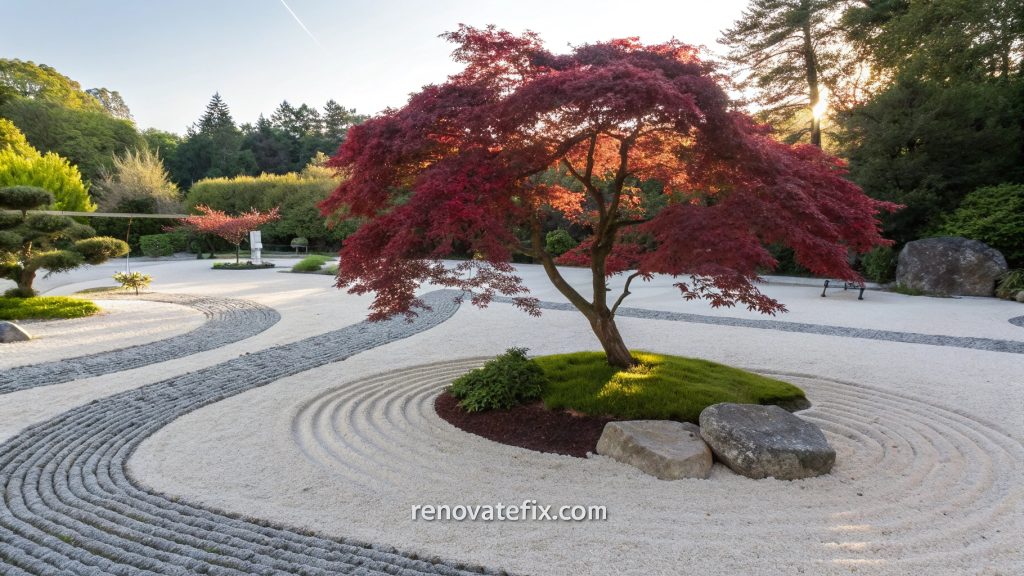
Surrounded by carefully raked gravel patterns that mimic flowing water, its sculptural form casts dramatic shadows across smooth stone surfaces.
This arrangement creates peaceful contemplation spaces where negative space emphasizes the tree’s architectural qualities.
Such gardens require minimal maintenance while delivering maximum visual impact through masterful restraint and thoughtful composition.
2. Woodland Edge Grouping
Multiple maple varieties with differing heights and hues planted along forest borders create stunning transition zones between wild areas and manicured lawns.
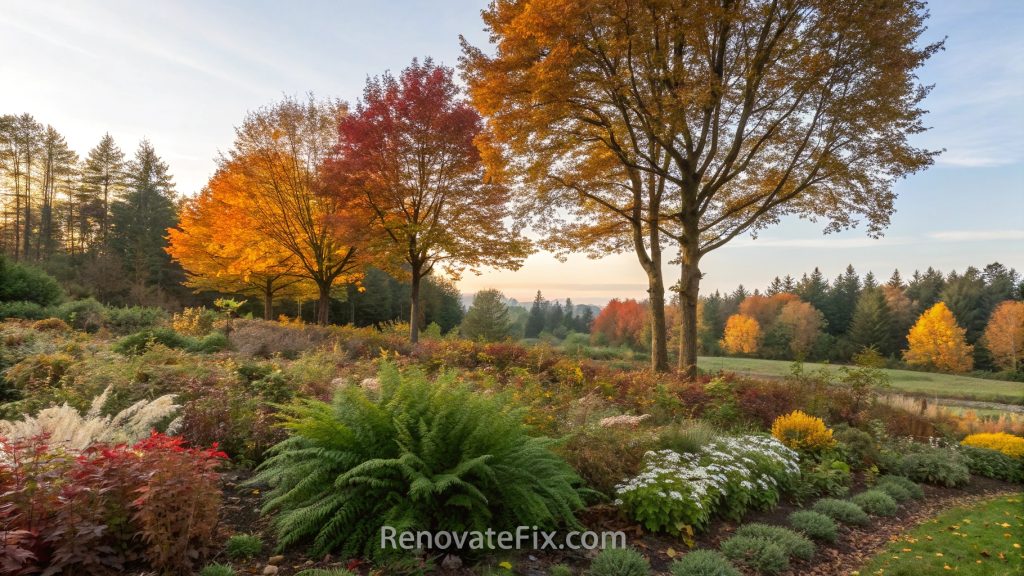
Their fiery autumn colors complement native understory plants while providing dappled shade for moisture-loving woodland perennials.
This naturalistic approach mimics how these trees grow in their native habitats, creating rich biodiversity pockets that attract beneficial wildlife while requiring minimal irrigation once established.
3. Water Feature Companion
Placing red-leafed specimens alongside reflective ponds doubles their visual impact through perfect mirror images on still water surfaces.
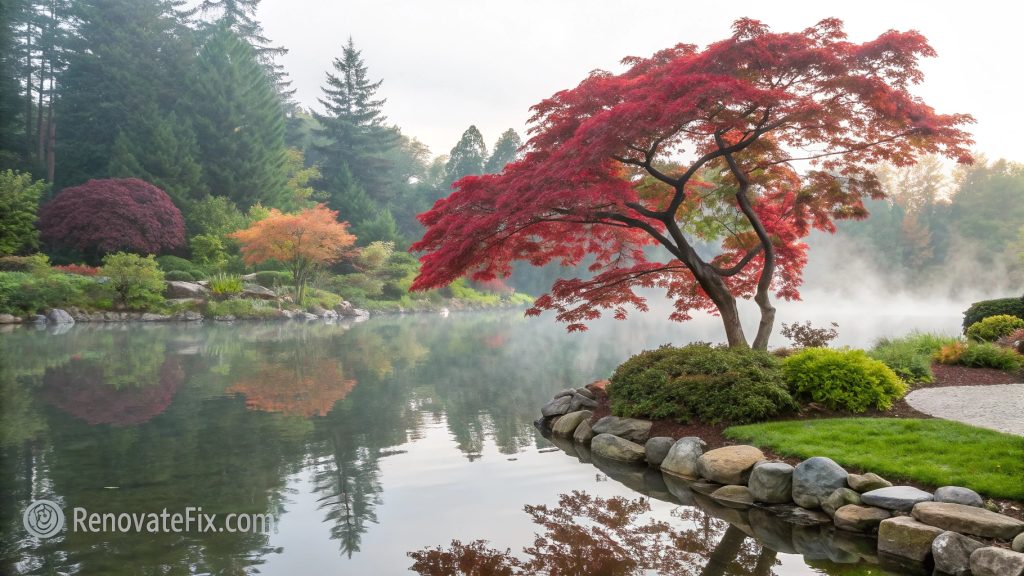
Their graceful branches extend over water edges, creating stunning seasonal displays as fallen leaves float gracefully atop dark water.
This pairing accentuates the tree’s natural elegance while adding depth perception to garden spaces through strategic water placement that captures changing sky conditions and tree silhouettes.
4. Container Showcase
Dwarf varieties thrive beautifully in large ceramic vessels on patios or balconies where space limitations exist.
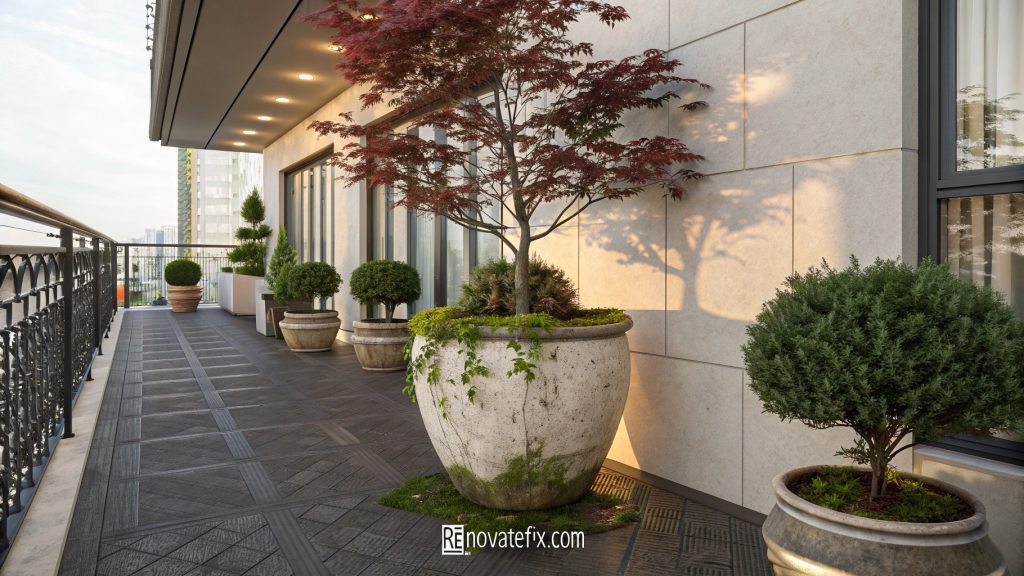
Their compact growth habits and shallow root systems make them ideal candidates for container cultivation that brings nature closer to living spaces.
Growing these trees in movable planters allows for seasonal rearrangement while protecting sensitive specimens from harsh winter conditions through strategic placement against structures.
5. Hillside Stabilizer
Strategically positioned specimens on sloped terrain prevent soil erosion through extensive root networks while creating multi-dimensional viewing experiences from various property vantage points.
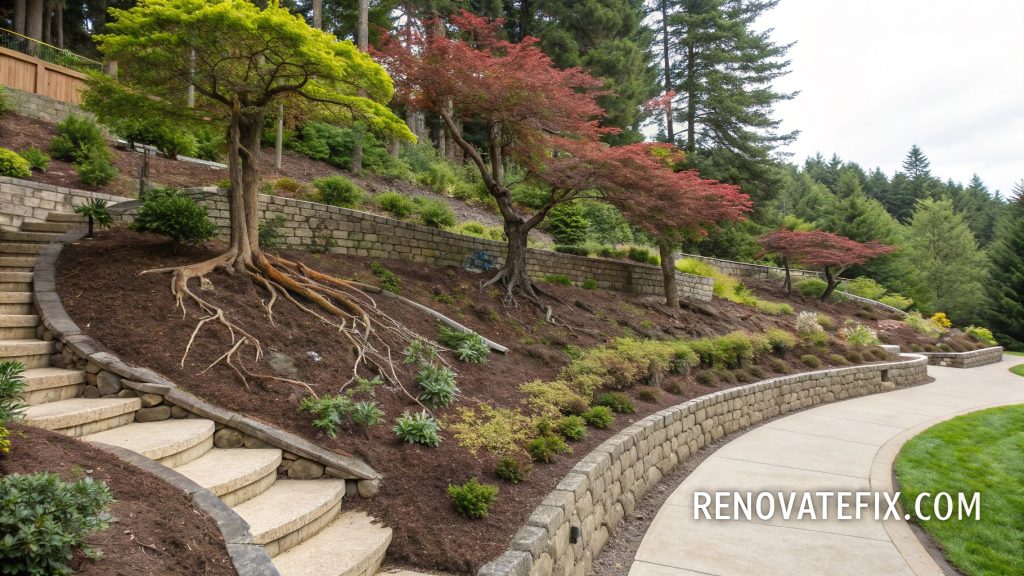
Their naturally spreading roots grip challenging terrain while adding vertical interest to hillside plantings that would otherwise remain difficult to landscape effectively.
This practical application combines aesthetic appeal with important environmental protection functions across challenging topography.
6. Four-Season Focal Point
Select varieties offer year-round interest through spring leaf emergence, summer canopy development, autumn color explosions, and winter branch architecture revealed after leaf drop.
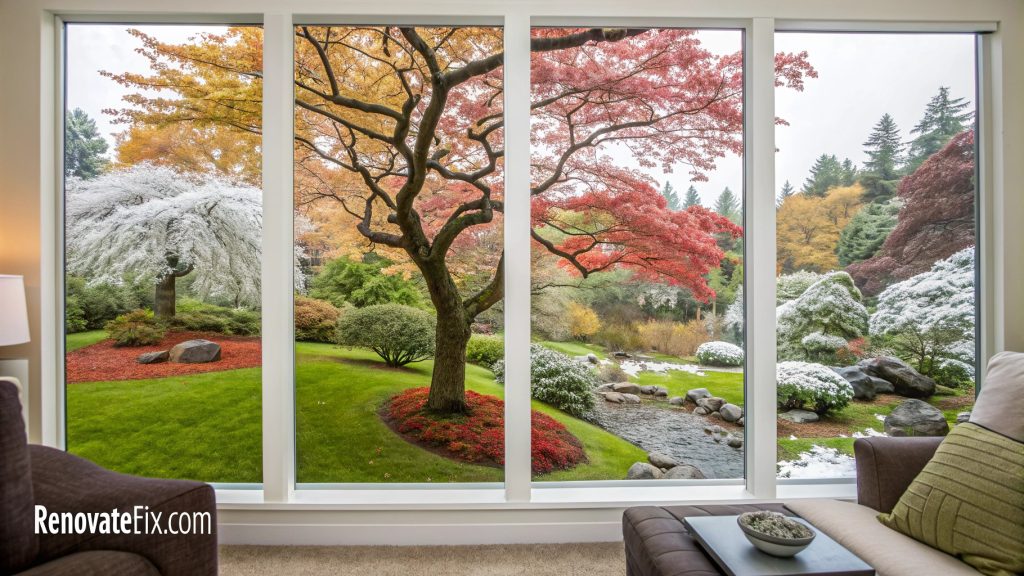
Positioning these specimens where they’re visible from indoor living spaces ensures constant visual connections with outdoor environments throughout changing seasons.
This strategic placement transforms window views into living artwork that evolves continuously through natural growth cycles.
7. Natural Privacy Screen
Multiple upright cultivars planted in linear arrangements create living barriers between properties without requiring formal hedge maintenance or artificial structures.

Their filtered shade produces dappled light patterns across garden spaces while providing visual separation that feels organic rather than constructed.
This approach delivers multi-dimensional screening that changes seasonally while supporting birds and beneficial insects within suburban environments.
8. Rock Garden Integration
Weeping varieties draped across large boulder formations create stunning visual contrasts between soft foliage and rugged stone elements.
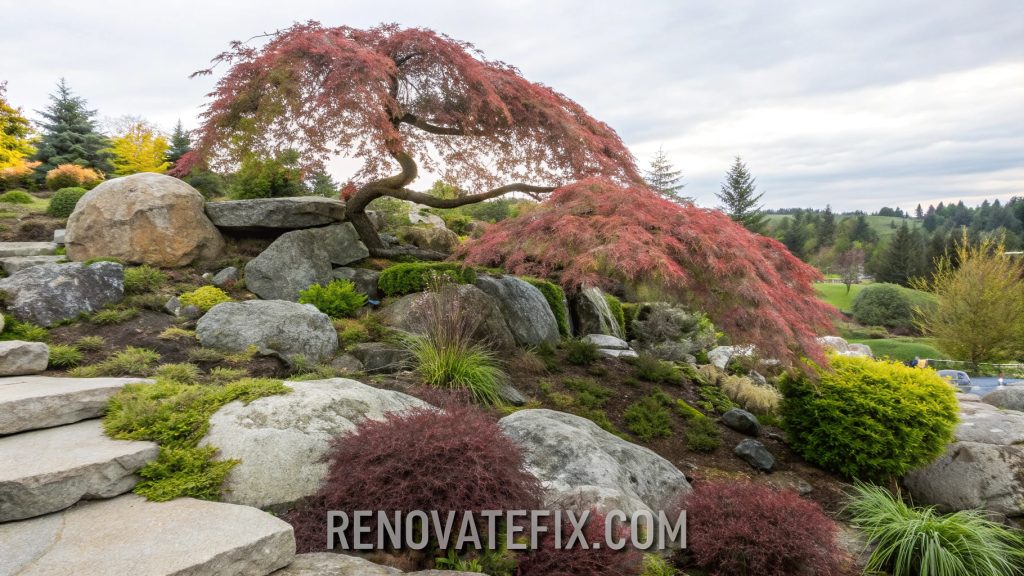
Their cascading growth habits soften hard landscape features while emphasizing natural material relationships that evolve beautifully over time.
This pairing highlights contrasting textures while creating microclimates where shade-loving plants thrive beneath protective canopies.
9. Urban Courtyard Statement
In confined city spaces, single specimen trees with striking architectural forms become outdoor room centerpieces that define spatial boundaries without overwhelming limited square footage.
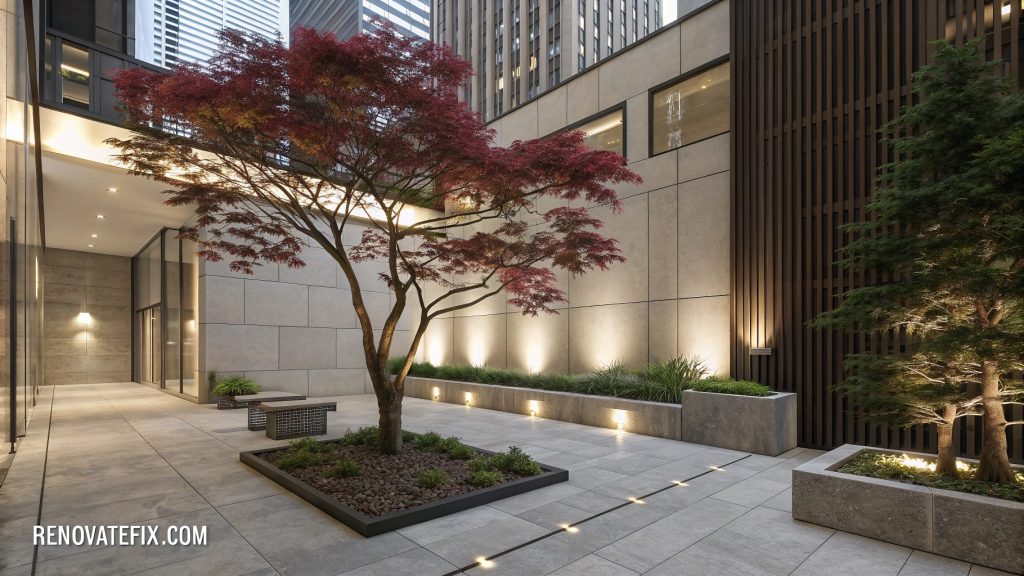
Their moderate growth rate allows for long-term sustainability within urban constraints while providing natural cooling effects during summer months.
This application demonstrates how even small spaces benefit from carefully selected tree specimens that contribute scale and proportion.
10. Pathway Canopy
Paired specimens planted opposite each other across garden walkways create intimate passage experiences where interconnected branches form natural archways overhead.
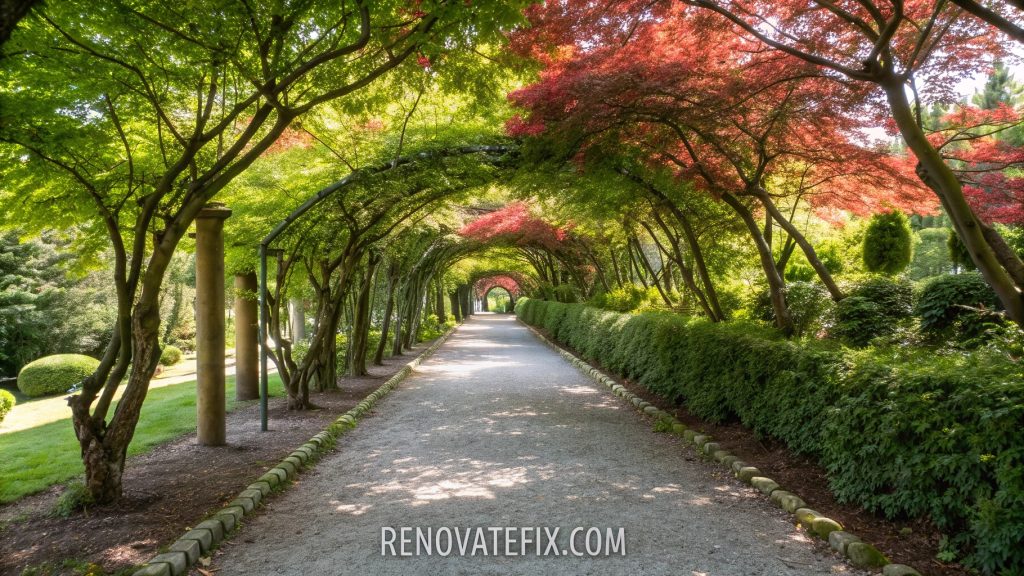
Dappled sunlight filters through leaves onto path surfaces below, creating dynamic shadow patterns that change throughout daylight hours.
This arrangement frames movement through garden spaces while providing gentle transition zones between open and enclosed landscape areas.
11. Mixed Border Anchor
Dwarf varieties positioned strategically within perennial flower beds provide structural permanence while surrounding plants change seasonally.
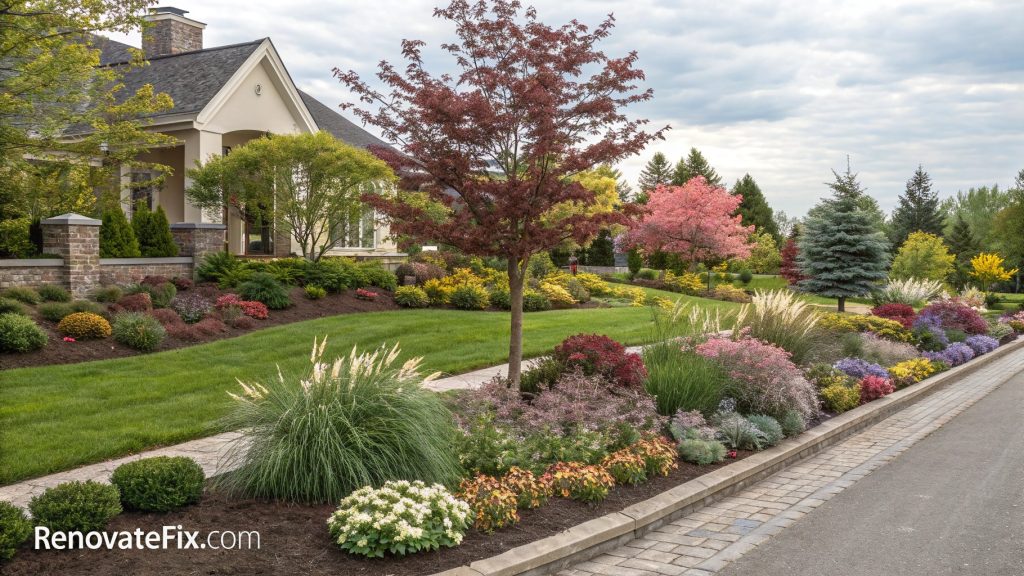
Their distinctive leaf shapes and colors establish rhythm within diverse plantings through repetition across garden spaces.
This approach bridges deciduous and evergreen elements while creating visual reference points that unify otherwise disparate plant communities within mixed borders.
12. Sculptural Winter Display
Varieties selected specifically for branch structure and bark characteristics create compelling visual interest during dormant months when garden features diminish.
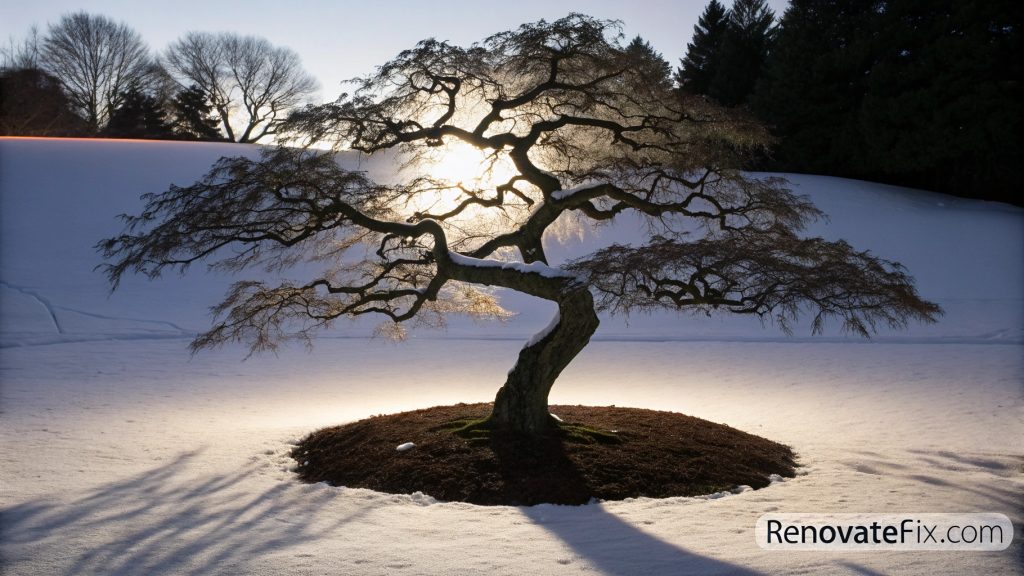
Strategic placement allowing low winter sunlight to backlight intricate branching patterns extends seasonal appeal beyond growing periods.
This consideration ensures year-round garden appreciation through intentional selection focused on leafless aesthetic qualities.
13. Moss Garden Companion
Low-growing varieties with horizontal branching habits complement traditional moss gardens where ground-hugging greenery creates carpet-like surfaces beneath protective canopies.
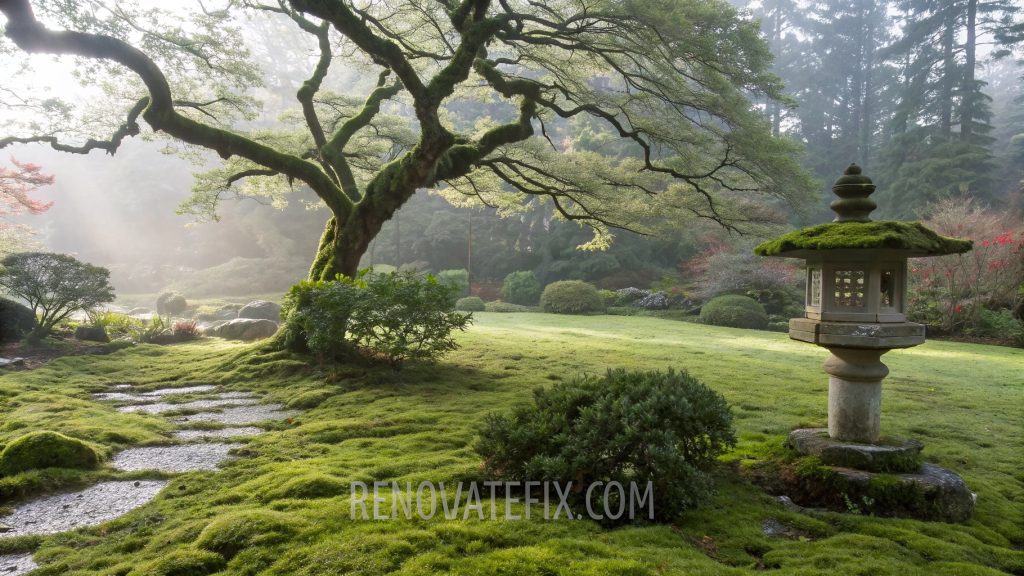
Their roots remain shallow enough to avoid disturbing delicate moss colonies while providing essential dappled light conditions.
This pairing honors ancient garden traditions while creating sustainable micro-environments that thrive with minimal water requirements.
14. Autumn Showcase Sequence
Various maple cultivars selected specifically for sequential color change timings extend fall color seasons dramatically when thoughtfully arranged across property viewsheds.
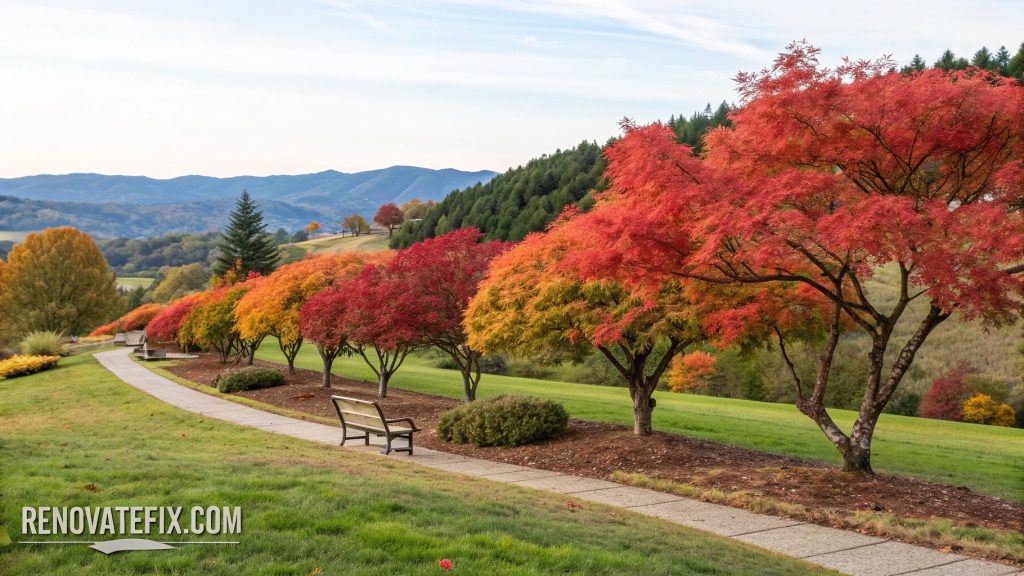
By positioning early, mid, and late-turning varieties strategically, spectacular displays continue for months rather than weeks.
This approach maximizes seasonal impact through botanical knowledge application that orchestrates natural color progressions across garden spaces.
15. Miniature Grove Effect
Multiple petite specimens planted closely together mimic natural forest stands while remaining appropriate for residential scale properties.
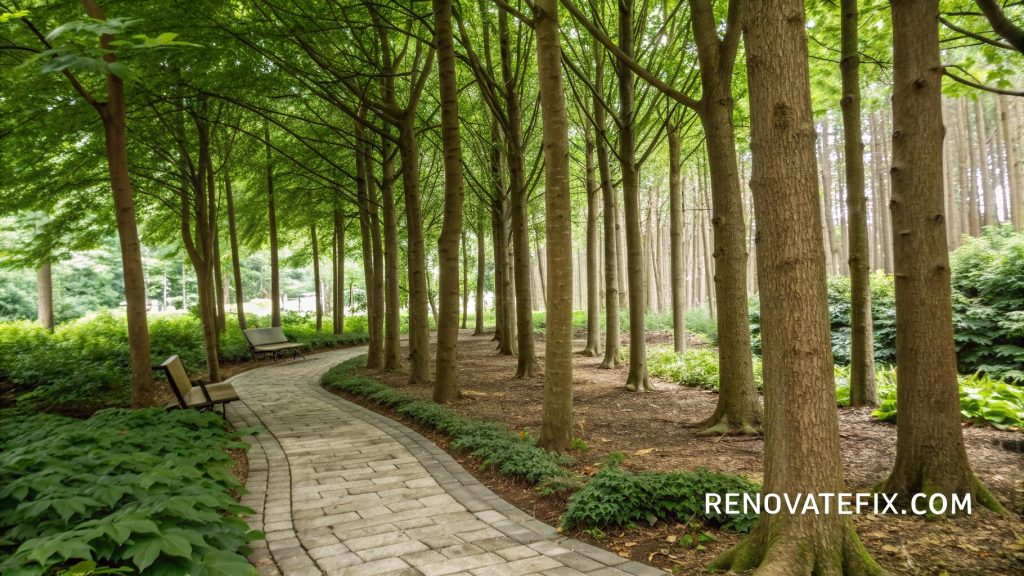
Their collective canopies create microclimate zones underneath where shade-loving understory plants thrive in protected conditions.
This arrangement references natural woodland ecosystems while delivering manageable maintenance requirements through thoughtful species selection and spacing considerations.
Conclusion
Maple trees originating from eastern Asia represent horticultural treasures that elevate any garden setting through their remarkable aesthetic qualities and adaptable growing habits.
The fifteen landscape concepts explored here merely scratch the surface of possibilities these exceptional trees offer across diverse environmental conditions and design styles.
Whether you implement a single suggestion or combine multiple approaches, introducing these botanical specimens into your outdoor spaces guarantees memorable garden experiences that evolve beautifully across seasons and years.
As living sculptures that continuously transform, these remarkable trees reward gardeners with ever-changing displays while establishing strong connections between human habitation and natural world rhythms.

